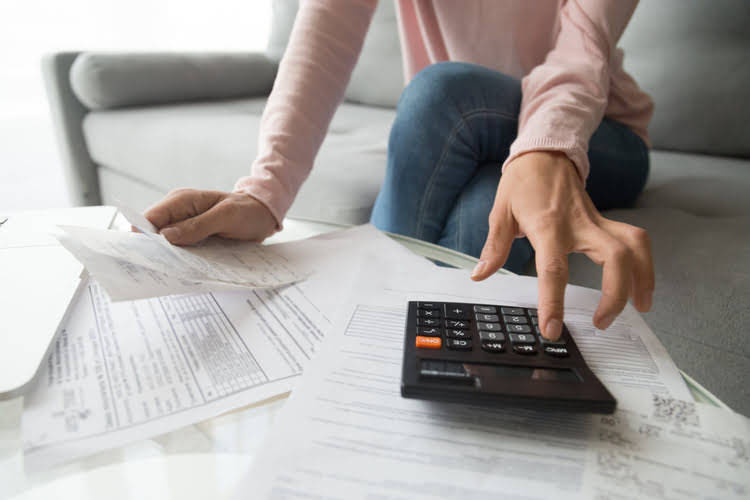
Some of the reasons that may cause the amount of equity to change include a shift in the value of assets vis-a-vis the value of liabilities, share repurchase, and asset depreciation. A liability is any money that a company owes to outside parties, from bills it has https://www.bookstime.com/ to pay to suppliers to interest on bonds issued to creditors to rent, utilities and salaries. Current liabilities are due within one year and are listed in order of their due date. Long-term liabilities, on the other hand, are due at any point after one year.

The balance sheet
Then, current and fixed assets are subtotaled and finally totaled together. Everything listed is an item that the company has control over and can use to run the business. Essentially, equity shows what would be left for the owners if all assets were used to pay off all liabilities.
How Is Shareholders’ Equity Determined?
- For example, if a company becomes bankrupt, its assets are sold and these funds are used to settle its debts first.
- If the accounting equation is out of balance, that’s a sign that you’ve made a mistake in your accounting, and that you’ve lost track of some of your assets, liabilities, or equity.
- 11 Financial is a registered investment adviser located in Lufkin, Texas.
- The offers that appear on this site are from companies that compensate us.
- As a result of the transaction, an asset in the form of merchandise increases, leading to an increase in the total assets.
- Equity is used as capital raised by a company, which is then used to purchase assets, invest in projects, and fund operations.
Unlike example #1, where we paid for an increase in the company’s assets with equity, here we’ve paid for it with debt. If the accounting equation is out of balance, that’s a sign that you’ve made a mistake in your accounting, and that you’ve lost track of some of your assets, liabilities, or equity. Accountants call this the accounting equation (also the “accounting formula,” or the “balance sheet equation”). For a sole proprietorship or partnership, equity is usually called “owners equity” on the balance sheet. The left side of the balance sheet is the business itself, including the buildings, inventory for sale, and cash from selling goods.
- Thus, the accounting equation is an essential step in determining company profitability.
- As a result, the company’s shareholder equity is expected to be around $23 billion in 2021.
- It reflects the value that belongs to the shareholders or owners of the business.
- Balance sheets, like all financial statements, will have minor differences between organizations and industries.
- Comparing several years of a company’s balance sheet may highlight trends, for better or worse.
- Get instant access to lessons taught by experienced private equity pros and bulge bracket investment bankers including financial statement modeling, DCF, M&A, LBO, Comps and Excel Modeling.
Real-World Example of the Accounting Equation

Retained profits increase in size over time due to the firm reinvesting some of its earnings. As a result, firms with a strong history may represent a majority of shareholders’ equity. The returns on shareholder stock that are reinvested back into the business rather than being paid out as dividends are represented as retained profits, net income from operations, and other activities.
- This is also why all revenue and expense accounts are equity accounts, because they represent changes to the value of assets.
- After the first year, your car would be shown on the balance sheet at the purchase price of $40,000 minus $8,000 accumulated depreciation, for a net book value of $32,000.
- A negative SE indicates that a company’s liabilities outnumber its assets.
- In this form, it is easier to highlight the relationship between shareholder’s equity and debt (liabilities).
- Other names used for this equation are balance sheet equation and fundamental or basic accounting equation.
- Because the increase in liability offsets the increase in assets, the net assets (owner’s equity) remains the same as before.
- Return on equity (ROE) is a measure of financial performance calculated by dividing net income by shareholder equity.
- This transaction brings cash into the business and also creates a new liability called bank loan.
- We are compensated in exchange for placement of sponsored products and services, or by you clicking on certain links posted on our site.
- When an investment is publicly traded, the market value of equity is readily available by looking at the company’s share price and its market capitalization.
- Notice that each transaction changes the dollar value of at least one of the basic elements of equation (i.e., assets, liabilities and owner’s equity) but the equation as a whole does not lose its balance.
- Company or shareholders’ equity is equal to a firm’s total assets minus its total liabilities.
However, if the business is structured as a limited liability company (LLC) or a corporation, it might be referred to as stockholder’s equity or shareholder’s equity. Let’s say your company had $7,000 in inventory last quarter but has $5,000 in inventory now. To find the net change, you subtract the previous period’s value ($7,000) from the current value ($5,000) to arrive at a net change of $2,000. That’s assets = liabilities + owners equity because market valuations often factor in aspects — from intellectual property to expected future returns — that you don’t include in the owner’s equity formula. The debt-to-equity ratio is a measure of a company’s financial risk and is calculated by dividing a company’s total debt by its total equity. It is, therefore, an important measure of the value of a company’s assets that are owned by shareholders.

Equity on a property or home stems from payments made against a mortgage, including a down payment and increases in property value. When an investment is publicly traded, the market value of equity is readily available by looking at the company’s share price and its market capitalization. For private entities, the market mechanism does not exist, so other valuation forms must be done to estimate value. For information pertaining to the registration status of 11 Financial, please contact the state securities regulators for those states in which 11 Financial maintains a registration filing.